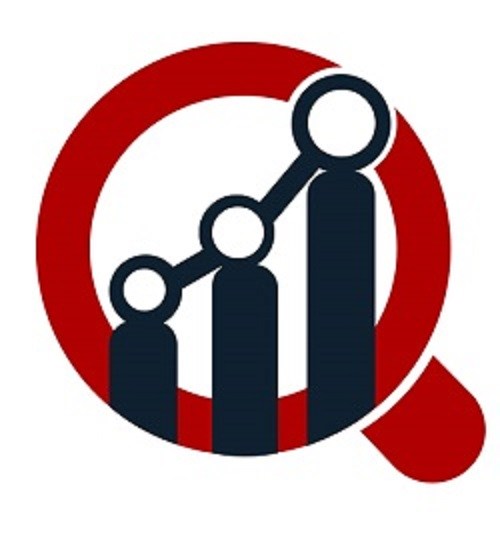Increasing awareness about various allergies, the introduction of the new treatment of products and rising demand from emerging markets drives the growth of the global market. Drug allergy is one of the most common types of allergies. It is the hyper sensitivity of the immune system to drug or medication. Any types of drugs such as prescription, nonprescription or herbal can induce drug allergy. Some common symptoms of the drug allergies are hives, skin rash, itching of the eyes or skin, swelling of the face, lips, or tongue, wheezing, and others. Treatment can relieve and prevent severe reactions.
New research to prevent drug allergies is another key driver for the market. The global drug allergy market is growing moderately and is expected to continue its growth over the forecast period.
Get Free Sample Copy @https://www.marketresearchfuture.com/sample_request/4033
Reaction to drugs and other medication can differ from patient to patient, with drug allergies becoming increasingly common. Market Research Future (MRFR) in its latest report has discovered that the market is due to witness a CAGR of 5.1% during the forecast period of 2017 to 2023. MRFR has further ascertained that the market is expected to grow to reach an estimated value of USD 4,764 Mn by the end of 2023
Top Key Players
AstraZeneca (UK), Bayer (US), Circassia (US), HAL Allergy Group (the Netherlands), Johnson & Johnson Services, Inc. (US), MAGNA Pharmaceuticals, Inc. (US), Stallergenes Greer (UK), and others.
Segments
The global drug allergy market is segmented on the basis of type, which comprises of immunologic, nonimmunologic, and others. Immunologic allergy is sub-segmented into type I reaction, type II reaction, type III reaction, type IV reaction, and others. The non-immunologic allergy is sub-segmented into predictable, unpredictable, and others. The predictable allergy is further segmented into pharmacologic side effect, secondary pharmacologic side effect, drug toxicity, drug-drug interactions, drug overdose, and others. The unpredictable segment is further sub-segmented into pseudoallergic, idiosyncratic, intolerance, and others.
On the basis of diagnosis, the market is segmented into skin tests, blood tests, patch test, and others. The skin test is further segmented into prick or scratch test, intradermal test, and others.
On the basis of treatments, the market is segmented into antihistamines, corticosteroids, treatment of anaphylaxis, withdrawal of the drug, and others. Antihistamines are further sub-segmented into azelastine eyedrops, azelastine nasal sprays, carbinoxamine, cyproheptadine, desloratadine, diphenhydramine, emedastine eyedrops, hydroxyzine, levocabastine eyedrops, levocabastine oral, and others. Corticosteroids is further sub-segmented into topical steroids, inhaled steroids, and others. Inhaled steroids is further segmented into flunisolide, fluticasone furoate, fluticasone propionate, triamcinolone acetonide, beclomethasone dipropionate, budesonide, and others.
On the basis of end user, it is segmented into hospitals & clinics, medical research centers, academic institutes, and others.
Regional Analysis
The Americas dominate the global market for the drug allergy. The Americas mainly include North America and Latin America, out of which North America accounts for the majority of the market share of this region. The US is the top revenue generating market in North America and is one of the important markets for the global drug allergy treatment. Approximately 10% of the total US population have drug allergies. Latin America drug allergy market is also growing significantly and mainly includes Brazil, Argentina, and Chile. Europe is the second largest market in the globe owing to increasing cases of drug allergy.
Europe is mainly divided into Eastern Europe and Western Europe. More developed Western European countries like Germany, UK and France are dominating this market while East European region is also growing significantly. Increasing cases of drug allergies are one of the major factors for the growth of the Europe market.
Asia Pacific region is showing the fastest growth rate in the global drug allergy market due to some major factors such as increasing awareness about various drug allergies, availability of treatment products, and rapidly improving healthcare facilities. Japan is holding the major market share while China’s drug allergy market is expected to show the fastest growth in this region. Changing healthcare practices and increasing patient involvement play an important role in the growth of this market.
The Middle East & Africa is expected to experience a limited growth due to lack of awareness about diseases, traditional healthcare practices, etc. The Middle East region dominates the market due to some of the major factors, for instance, developed healthcare facilities and government support to improve public health.
Browse Premium Research Enabled with Tables and Figures @ https://www.marketresearchfuture.com/reports/drug-allergy-market-4033
About US:
Market Research Future (MRFR), enable customers to unravel the complexity of various industries through Cooked Research Report (CRR), Half-Cooked Research Reports (HCRR), Raw Research Reports (3R), Continuous-Feed Research (CFR), and Market Research & Consulting Services.
Media Contact
Company Name: Market Research Future
Contact Person: Abhishek Sawant
Email: Send Email
Phone: +1 646 845 9312
Address:Market Research Future Office No. 528, Amanora Chambers Magarpatta Road, Hadapsar
City: Pune
State: Maharashtra
Country: India
Website: https://www.marketresearchfuture.com/reports/drug-allergy-market-4033

